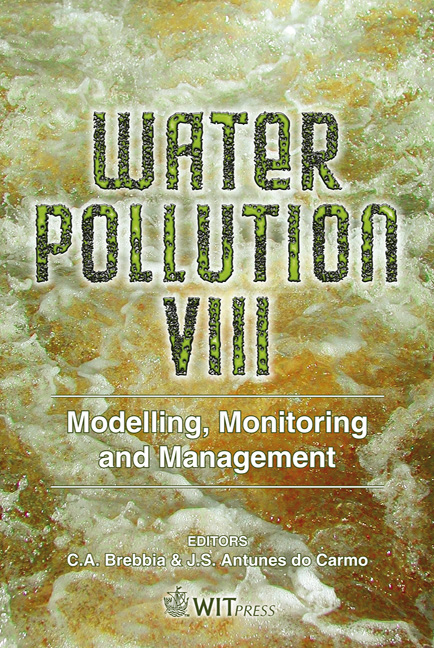Determining Transport Parameters For Unsaturated Porous Media In Flow-tank Experiments Using Image Analysis
Price
Free (open access)
Transaction
Volume
95
Pages
11
Published
2006
Size
514 kb
Paper DOI
10.2495/WP060321
Copyright
WIT Press
Author(s)
K. Inoue, N. Setsune, F. Suzuki & T. Tanaka
Abstract
Tracer experiments are carried out in water flow tank with 80cm height, 80cm length and 20cm width, which is filled homogeneously with two different types of sand materials. Brilliant Blue FCF, which makes the flow paths visible, is applied as a point source at the surface of the flow field. Dispersivity and dispersion coefficient are estimated using a time series of images of tracer transition. Experimental results show a linear dependence of dispersion coefficients on tracer velocity at a certain velocity and exhibits non-linearity in the range of higher water content. While values of dispersivity show an independency of rainfall intensity, dispersivity in unsaturated flow region is approximately one order larger than that in saturated flow region, indicating that transport parameters depend strongly on the water content where solute passes through. Keywords: tracer experiment, unsaturated, parameter estimation, dispersion, image analysis, dye. 1 Introduction An understanding of solute transport mechanism through not only saturated but unsaturated zones under various hydraulic conditions is important in environmental protection and agriculture. Fast transport of fertilizers and other agrochemicals into subsurface or groundwater systems has been recognized as a serious threat due to high concentration of solutes. In order to understand and express the transport behavior of contaminants in a subsurface, the transport parameters such as longitudinal and transverse dispersivities are some of the key factors that play an important role in spreading the contaminants.
Keywords
tracer experiment, unsaturated, parameter estimation, dispersion, image analysis, dye.





